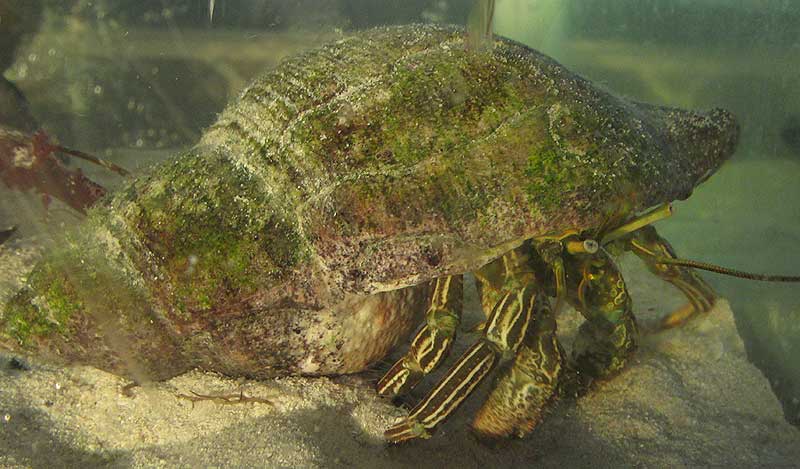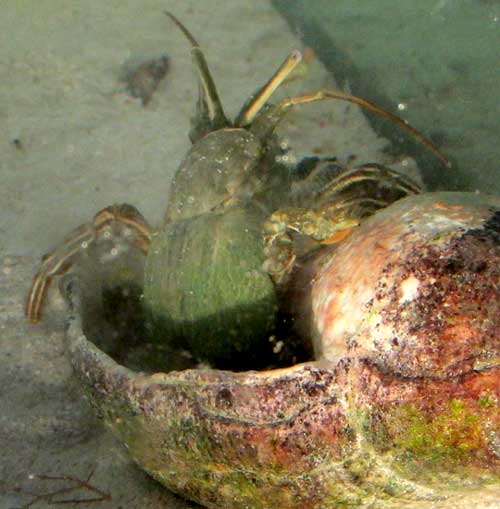Excerpts from Jim Conrad's
Naturalist Newsletter

from the March 15, 2015 Newsletter issued from Río Lagartos, on the Yucatan Peninsula's northern coast (~N21.60°, ~W88.16°), Yucatán state, MÉXICO
STRIPED HERMIT CRAB
At low tide as you wade across shallowly submerged seagrass meadows of Shoalgrass, you see conch and whelk shells on the estuary floor. Often these shells are just the remains of dead gastropods, and are inhabited by hermit crabs. On beaches, in the mangroves, in the intertidal zone, and deeper water out at sea, it's amazing how many hermit crabs, and how many species of them, there are.
Hermit crabs are members of the superfamily, or group of families, known as the Paguroidea, and about 1100 species of hermit crabs are known. Recently someone here brought in a 3½-inch long shell (9cm) emptied of its maker but occupied by a hermit. The shell, covered with green algae, was placed on the aquarium's sandy floor, but in a position inconvenient for the crab. Before long the crab began emerging, needing to turn the shell upright, exposing more of his body than normal. The bodies of regular crabs are much wider than long, but now we could see that this hermit's body was slender like a crawfish's, and curved, enabling it to fit better inside the coiled shell. Below, you can see the hermit emerging with it narrow, curved back, or carapace, clearly visible:

Once the hermit had flipped over the shell, he assumed his normal position and with his stalked eyes waving back and forth surveyed his new home. You can see him then at the top of this page.
Because of his large size, the distinctive yellowish lines ornamenting his legs, and the fact that he's a common species, the hermit's identity was easy to figure out. He's the Striped Hermit Crab, CLIBANARIUS VITTATUS, found in shallow water from Virginia on the US eastern coast south through the Gulf of Mexico and the Caribbean to Brazil. The species is noted for being able to survive outside of water for longer periods than other hermits. Striped Hermit Crabs live on sand or mud, in seagrass meadows, on rock jetties, in oyster beds and other inshore habitats, at depths down to over 70ft (22m).
The University of Southern Mississippi's Scott Aquarium provides a Striped Hermit Crab document in PDF format providing much information about the species, including an illustration of the entire slender, curved body, which looks as vulnerable outside a mollusk shell as it really is, at http://www.usm.edu/gcrl/fisheries_center/docs/brochure.hermit.crab.pdf.